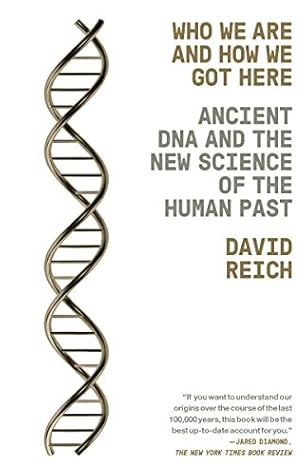More on this book
Community
Kindle Notes & Highlights
by
David Reich
Read between
August 7 - August 16, 2018
For example, the first third of a chromosome a woman passes down to her egg might come from her father and the last two-thirds from her mother, the result of a splicing together of her father’s and mother’s copies of that chromosome in her ovaries. Females create an average of about forty-five new splices when producing eggs, while males create about twenty-six splices when producing sperm, for a total of about seventy-one new splices per generation.20 So it is that as we trace each generation back further into the past, a person’s genome is derived from an ever-increasing number of
...more
Ten generations back, for example, the number of ancestral stretches of DNA is around 757 but the number of ancestors is 1,024, guaranteeing that each person has several hundred ancestors from whom he or she has received no DNA whatsoever. Twenty generations in the past, the number of ancestors is almost a thousand times greater than the number of ancestral stretches of DNA in a person’s genome, so it is a certainty that each person has not inherited any DNA from the great majority of his or her actual ancestors.
These calculations mean that a person’s genealogy, as reconstructed from historical records, is not the same as his or her genetic inheritance.
The number of ancestors you have doubles every generation back in time. However, the number of stretches of DNA that contributed to you increases by only around seventy-one per generation. This means that if you go back eight or more generations, it is almost certain that you will have some ancestors whose DNA did not get passed down to you. Go back fifteen generations and the probability that any one ancestor contributed directly to your DNA becomes exceedingly small.


